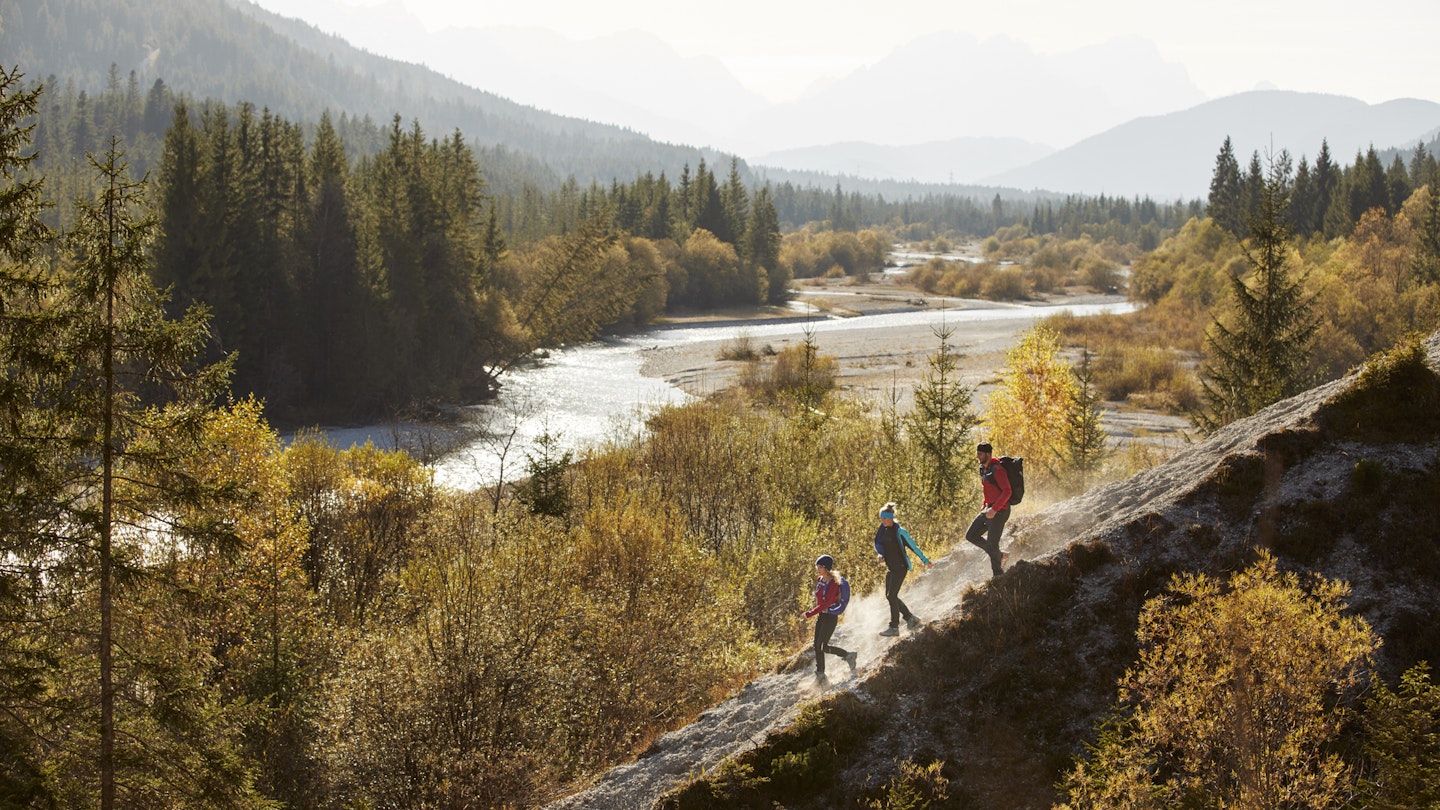The hills and valleys of Germany have long been explored on foot by locals and travelers in search of glorious natural landscapes and bracing fresh air.
Pack your bags for a trip to this beautiful country and you’ll quickly see why. From the whispering woodlands of the fabled Black Forest to the wind-whipped loveliness of the Baltic shore, Germany offers some of the most varied and appealing hiking experiences found anywhere in Europe.
Additionally, the hiking infrastructure is outstanding. The German Hiking Association (Deutscher Wanderverband, or DWV), a collective of over 70 mountaineering and hiking associations, takes great care and pride in maintaining their 150 long-distance hiking trails, along with countless shorter routes. Well-maintained and signposted, these routes create a network exceeding 200,000 km (124,275 miles) in length, making it a hiker’s paradise.
Top Hiking Trails in Germany
It’s nearly impossible to isolate the rarest gems among these riches, but six of the favorites have been chosen, each easily broken into smaller, more manageable stages for your hiking pleasure.
1. Wutachschlucht Trail
Best for Gorge Rambling
Distance: 13 km (8 miles), Duration: 3–4 hours, Difficulty: Easy
The dynamic Wutach River in Baden-Württemberg is responsible for this delightful gorge walk through the High Black Forest. Sheer rock faces of up to 170 m (558 ft) create a unique microclimate, harboring rare ferns, orchids, lizards, and butterflies.
Instead of attempting to traverse the entire 119 km (74 miles) of the gorge, consider this easier segment from Schattenmühle, an old mill turned rustic hotel, to Wutachmühle, where refreshments and hot meals await. Schattenmühle is a 30-minute walk south of Göschweiler, a southern district of Löffingen, near the Swiss border.
2. The Rennsteig
Best Historic German Hike
Distance: 169 km (105 miles), Duration: 7–10 days, Difficulty: Moderate
This ancient ridgetop ramble through the Thuringian Forest and the valley of the Saale River is Germany’s oldest and most popular long-distance trail. Named a “cultural monument” in 1999, it has been followed since at least the 13th century.
The Rennsteig runs from Hörschel near Eisenach to Blankenstein on the Saale, and is generally attempted across seven or more days, making it suitable for those who possess at least moderate fitness. With distinctive “R” signs, the route is best experienced in the shoulder seasons of April/May and September/October, where mild weather and thinner crowds are the norm.
3. The Burgenweg Upper Palatinate
Best for German Castles
Distance: 176 km (109 miles), Duration: 9–11 days, Difficulty: Moderate to Hard
This striking 176 km trail in the northwest features a captivating blend of isolated beauty and sights of historical significance. Starting near Marktredwitz, it predominantly traverses Bavaria’s Northern Upper Palatinate Forest Nature Park, showcasing an abundance of castles.
Some notable highlights include Burgruine Weißenstein, a ruin perched on a 758 m (2487 ft) rock; Falkenberg Castle, originally constructed in the 9th century CE; and the 13th-century Trausnitz Castle, overlooking the town of Landshut on the Isar River.
4. The Jurasteig
Best for Flora and Fauna
Distance: 237 km (147 miles), Duration: 13–16 days, Difficulty: Moderate to Hard
The low, forested mountains of the Bavarian Jura create a serene backdrop for the Jurasteig (Jura Hiking Trail). Broken into 13 stages of varying lengths and difficulties, the trail wanders through a karstic (limestone) landscape filled with meadows, pine forests, juniper scrub, and beech woods.
Moreover, this trail offers 18 loop trails allowing hikers to explore day trips to nearby castles and monasteries dotting the Bavarian Jura. The magnificent flora and fauna present a vibrant opportunity to spot falcons, kingfishers, orchids, and Carthusian pink carnations.
5. The Heidschnucken Trail
Best for Flowering Heather
Distance: 223 km (139 miles), Duration: 13–15 days, Difficulty: Moderate
One of Germany’s most striking hikes, the multi-day Heidschnucken Trail winds through Lüneburg Heath Nature Reserve, between Fischbek in Hamburg and Celle. This area boasts the largest interconnected heathland in Europe, populated by moorland sheep that naturally maintain the heather plants.
The trail comprises 13 stages, highlighting captivating heath valleys like Totengrund and Radenbachtal, along with various rivers and charming towns. The best time to enjoy the Heidschnucken is during August and September when the heather is in full bloom.
6. The Green Belt
Best for German Cold War History
Distance: 1393 km (866 miles), Duration: 8–10 weeks, Difficulty: Hard
The German Green Belt (Grünes Band Deutschland) serves as an extraordinary linear nature reserve and walking trail along the 1393 km (866 miles) “Inner Border” that divided East and West Germany during the Cold War. As this area was off-limits, nature flourished along its length, resulting in a rich diversity of habitats supporting various endemic species.
Following the fall of the Berlin Wall in 1989, the Green Belt has been preserved, stretching from Lübeck on the Baltic Sea to the point where Saxony, Bavaria, and the Czech Republic converge. Numerous watchtowers and fortifications along the way tell the stories of that turbulent time in history, while shorter walks such as the Harz Border Trail offer more manageable hiking durations for most adventurers.





